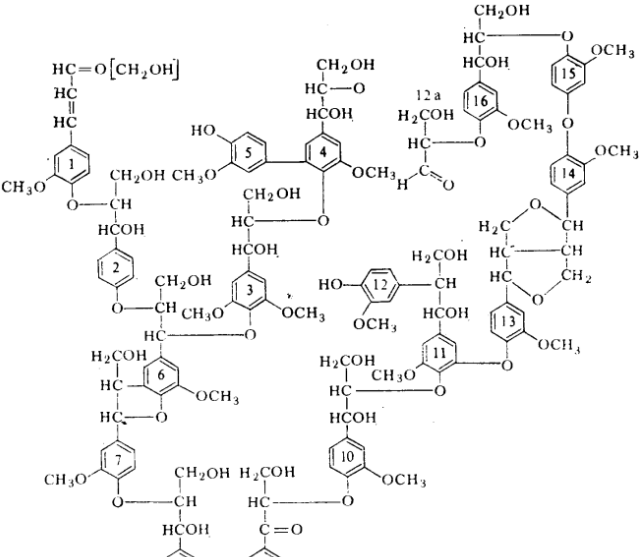THE EFFECT OF FUNCTIONAL NATURE ON THE DIELECTRIC PROPERTIES OF SLIGHTLY ALTERED LIGNINS
UDK 54.03, 54.04
Abstract
One of the promising directions of using lignins is the application of their electrophysical properties. They are caused by the presence of a multifunctional aromatic nature, a conjugation system and a high reactivity in redox interactions. The objects of the study were slightly altered dioxanlignin of spruce and modified samples with different contents of carbonyl and methoxyl groups. The interrelation of the functional nature, reactionary (acid-base and redox) and dielectric properties of lignins was shown in this work. The change in the content of carbonyl groups leads to significant differences in the redox properties of the natural polymer. The changes in the values of the effective oxidative potential of the phenolic structures of lignin were up to 24 mV. The values of the electrical conductivity and the components of the complex permittivity in the frequency range of the alternating electric field from 10-2 to 107 Hz were determined by dielectric spectroscopy. Certain types of relaxators in the structure of lignins were identified according to the frequency dependences of the components of the complex permittivity to assess the effect of the functional nature of the polymer. The change in the content of carbonyl and methoxyl groups affects the values of the real part of the complex permittivity at alternating electric field frequencies less than 1 Hz. This allows us to consider lignin as a promising material for the manufacture of broadband electrical capacitors.
Downloads
Metrics
References
Bogolitsyn K.G., Lunin V.V. Fizicheskaya khimiya lignina. [Physical chemistry of lignin]. Moscow, 2010, 492 p. (in Russ.).
Zakzeski J., Bruijnincx P.C.A., Jongerius A.L., Weckhuysen B.M. Chemical Reviews, 2010, vol. 110, no. 6, pp. 3552–3599. DOI: 10.1021/cr900354u.
Bertella S., Luterbacher J.S. Trends in Chemistry, 2020, vol. 2, no. 5, pp. 440–453. DOI: 10.1016/j.trechm.2020.03.001.
Park J.H., Rana H.H., Lee J.Y., Park H.S. Journal of Materials Chemistry A, 2019, vol. 7, no. 28, pp. 16962–16968. DOI: 10.1039/C9TA03519B.
Gindl-Altmutter W., Fürst C., Mahendran A., Obersriebnig M., Emsenhuber G., Kluge M., Veigel S., Keckes J., Lieb-ner F. Carbon, 2015, vol. 89, pp. 161–168. DOI: 10.1016/j. carbon.2015.03.042.
Khan A., Nair V., Colmenares J.C., Gläser R. Topics in Current Chemistry (Z), 2018, vol. 376, article 20. DOI: 10.1007/s41061-018-0198-z.
Jha S., Bandyopadhyay S., Mehta S., Yen M., Chagouri T., Palmer E., Liang H. Energy Fuels, 2022, vol. 36, no. 2, pp. 1052–1062. DOI: 10.1021/acs.energyfuels.1c03270.
Khviyuzov S., Bogolitsyn K., Volkov A., Koposov G., Gusakova M. Holzforschung, 2020, vol. 74, no. 12, pp. 1113–1122. DOI: 10.1515/hf-2019-0149.
Pepper J.M., Wood P.D.S. Canadian Journal of Chemistry, 1962, vol. 40, pp. 1026–1028. DOI: 10.1139/v62-153.
Zakis G.F., Mozheyko L.N., Telysheva G.M. Metody opredeleniya funktsional'nykh grupp lignina. [Methods for de-termining functional groups of lignin]. Riga, 1975, 176 p. (in Russ.).
Kosyakov D.S., Bogolitsyn K.G., Gorbova N.S., Khviyuzov S.S. Khimiya Rastitel'nogo Syr'ya, 2007, no. 4, pp. 45–52. (in Russ.).
Bogolitsyn K.G., Khviuzov S.S., Gusakova M.A., Pustynnaya M.A., Krasikova A.A. Wood Science and Technology, 2018, vol. 52, no. 4, pp. 1153–1164. DOI: 10.1007/s00226-018-1008-z.
Pandey K.K. Journal of Applied Polymer Science, 1999, vol. 71, pp. 1969–1975.
Reznikov V.M. Khimiya drevesiny, 1977, no. 3, pp. 3–23. (in Russ.).
Demin V.A., Shereshovets V.V., Monakov Yu.B. Uspekhi khimii, 1999, vol. 68, pp. 1029–1049. (in Russ.).
More A., Elder T., Jiang Z. Holzforschung, 2021, vol. 75, no. 9, pp. 806–823. DOI: 10.1515/hf-2020-0165.
Evstigneev E.I., Chupka E.I. Khimiya drevesiny, 1990, no. 5, pp. 27–35. (in Russ.).
Ragnar M., Lindgren C.T., Nilvebrant N.O. Wood Chemistry and Technology, 2000, vol. 20, no. 3, pp. 277–305. DOI: 10.1080/02773810009349637.
Gracё M.P.F., Rudnitskaya A., Fernando A.C., Faria F.A.C., Evtuguin D.V., Gomes M.T.S.R., Oliveira J.A.B.P., Costa L.C. Electrochimica Acta, 2012, vol. 76, pp. 69–76. DOI: 10.1016/j.electacta.2012.04.155.
Tonkonogov M.P. Uspekhi fizicheskikh nauk, 1998, vol. 168, no. 1, pp. 29–54. (in Russ.).
Bogolitsyn K.G., Khviyuzov S.S., Volkov A.S., Gusakova M.A. Zhurnal fizicheskoy khimii, 2019, vol. 93, no. 2, pp. 307–312. (in Russ.).
Volkov A.S., Koposov G.D., Khviyuzov S.S. Chemical Physics, 2021, vol. 548, article 111202. DOI: 10.1016/j.chemphys.2021.111202.
Bogolitsyn K.G., Khviyuzov S.S. Polymer Bulletin, 2023, vol. 80, no. 1, pp. 1001–1015. DOI: 10.1007/s00289-022-04323-x.

Copyright (c) 2024 chemistry of plant raw material

This work is licensed under a Creative Commons Attribution 4.0 International License.

This work is licensed under a Creative Commons Attribution 4.0 International License.
The authors, which are published in this journal, agree to the following conditions:
1. Authors retain the copyright to the work and transfer to the journal the right of the first publication along with the work, at the same time licensing it under the terms of the Creative Commons Attribution License, which allows others to distribute this work with the obligatory indication of the authorship of this work and a link to the original publication in this journal .
2. The authors retain the right to enter into separate, additional contractual agreements for the non-exclusive distribution of the version of the work published by this journal (for example, to place it in the university depository or to publish it in a book), with reference to the original publication in this journal.
3. Authors are allowed to post their work on the Internet (for example, in a university repository or on their personal website) before and during the review process of this journal, as this may lead to a productive discussion, as well as more links to this published work.











